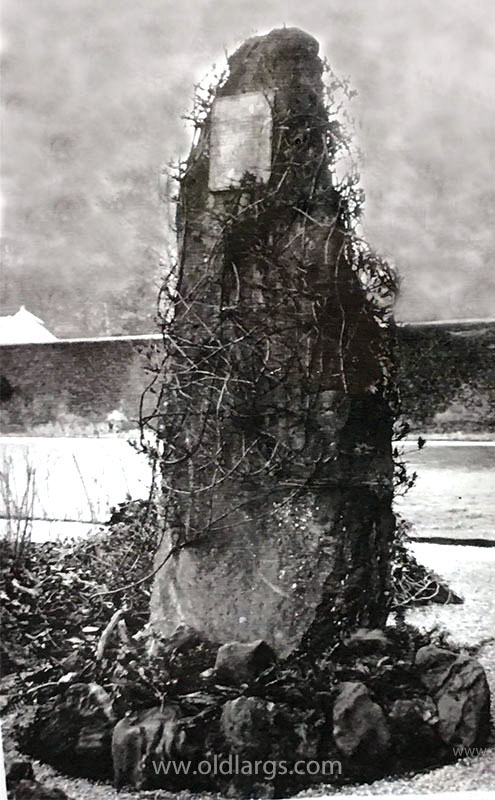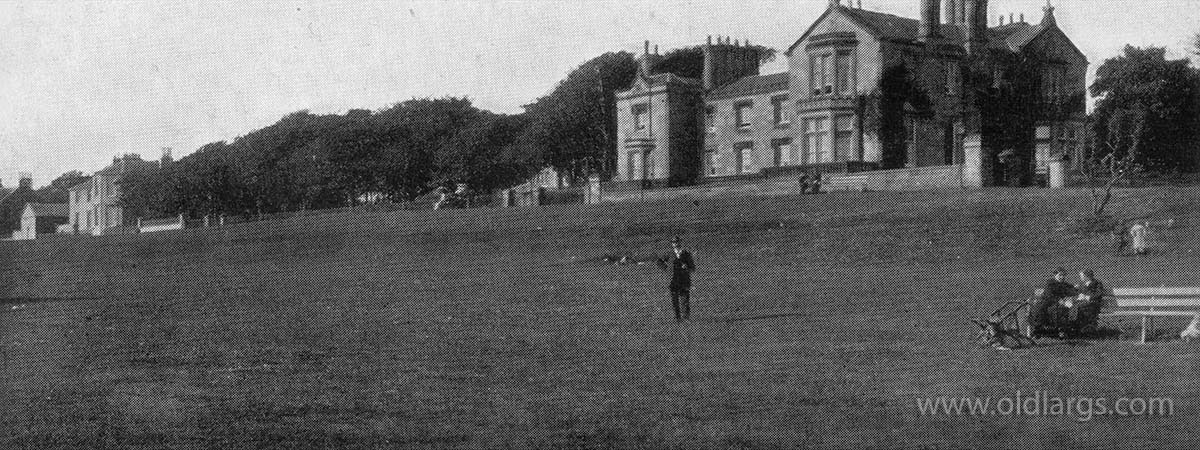
The Old Priory and Elderslie Hotels
As now arrive at the Priory and Elderslie Hotel buildings. Both buildings have now been converted into flats.The Old Priory Hotel which faces directly onto Broomfields is a category B-listed building. It was built in 1829 for Henry Dunlop who had shipping interests. Later owners were lawyer Dr James Graham and then Mr John Gill Chairman of the Arizona Copper Co who bought it in 1905. In 1911 it was bought by Mr J Wilson a charted accountant. He linked the priory and the Elderslie buildings together by a corridor with the intention of forming a new Largs Hydropathic Hotel. However the outbreak of WW1 prevented the new Largs Hydropathic opening.
During WW2 the two buildings were run by WRNS as a rest home for Fleet Air pilots between spells of duty.The Elderslie Hotel building is at the junction of John Street and Broomfield Place. It is also a category B-listed building. This Building was built in 1812. Originally a small two story square villa it was originally the manse of the U P Church. It was then bought by Miss Speirs of Elderslie Renfrewshire. Her family could trace their family back to Sir William Wallace. Miss Speirs enlarged the building by the addition of two wings and back premises for domestic staff. The heraldic insignia of her family can still be seen on the south facing wall above the dining room. The roof has decorations in the form of chess pieces which are part of the original design.
The Elderslie and Priory continued as a hotel under the name of the Elderslie for many years. It eventually came under the new ownership of Brian and Doris Corkindale in 1995. By this time a large glass conservatory was built to link the two buildings.The Corkindales sold the hotel and the new owner The Maksu Group of Hotels changed the name to the Priory House Hotel. This business ran as a successful hotel and wedding location for years until they were converted to flats.
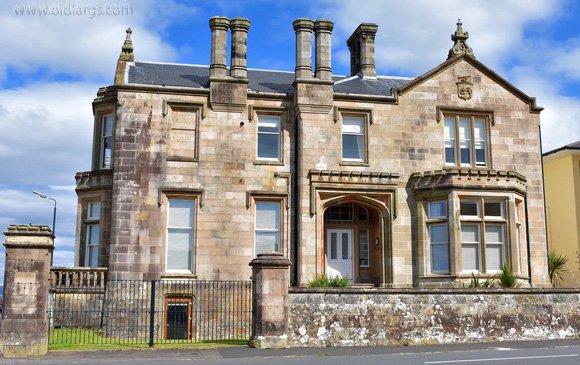
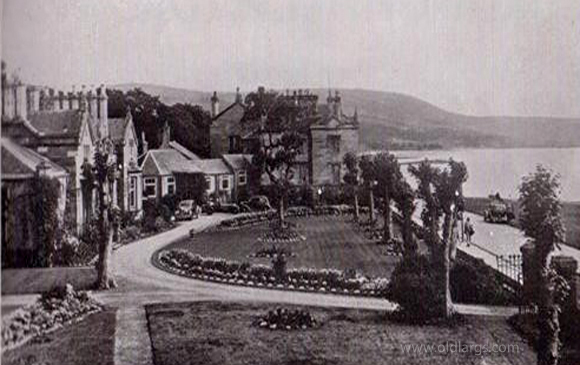
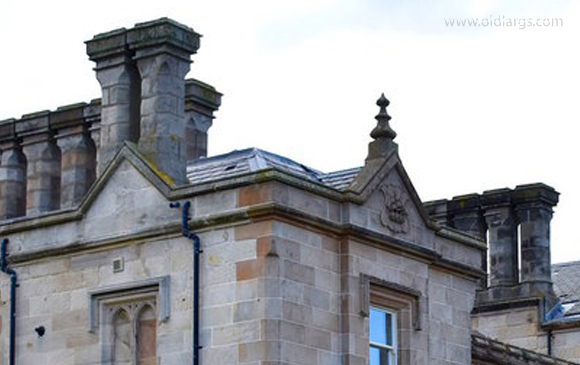
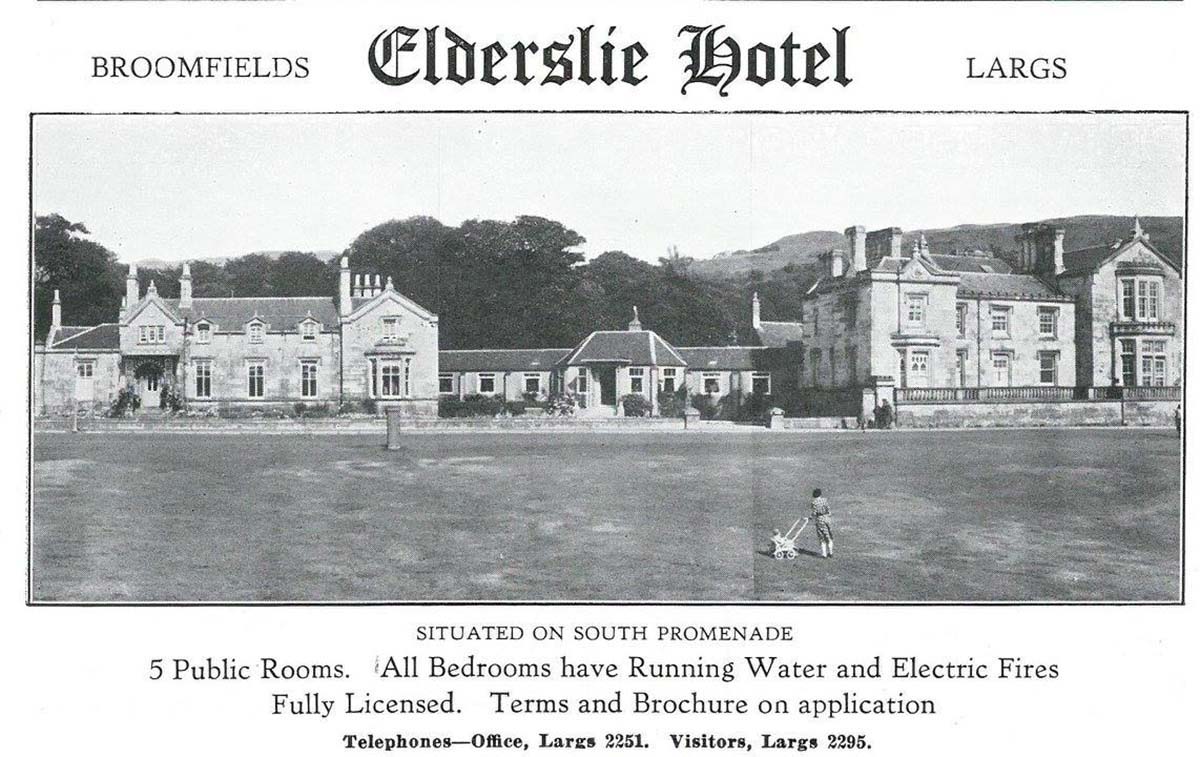
Broomfields and Haco's Stone
Between the road and the foreshore we have Bloomfields which is one of the loveliest open spaces in Largs. Broomfields was present to the burgh by Sir Thomas Makdougall Brisbane. At that time the area was a complete field of broom so it’s not surprising the area was known as Broomfields. Soon many fine houses were built in the area. At one point the Dunlop brothers who lived in the Priory along with other neighbours erected stone pillars at the foot of Castle Hill. The intention was to stop carriages getting access to Broomfields and going in front of their houses.These pillars were soon demolished by out raged locals. Since that time the Brisbane Estate guaranteed the use of Broomfields and public ground above the foreshore to the town of Largs for a payment of a shilling a year and acknowledging the Brisbane Estate as superiors. In the 1920s, Miss Aubyn Brisbane, a descendant of Sir Tomas relinquished her rights as superior of the foreshores of Largs to the Town Council for £2000.The following images shows Broomfields over the last 100 years. The images are taken from old postcards and you can see that the area has not really changed over that period.


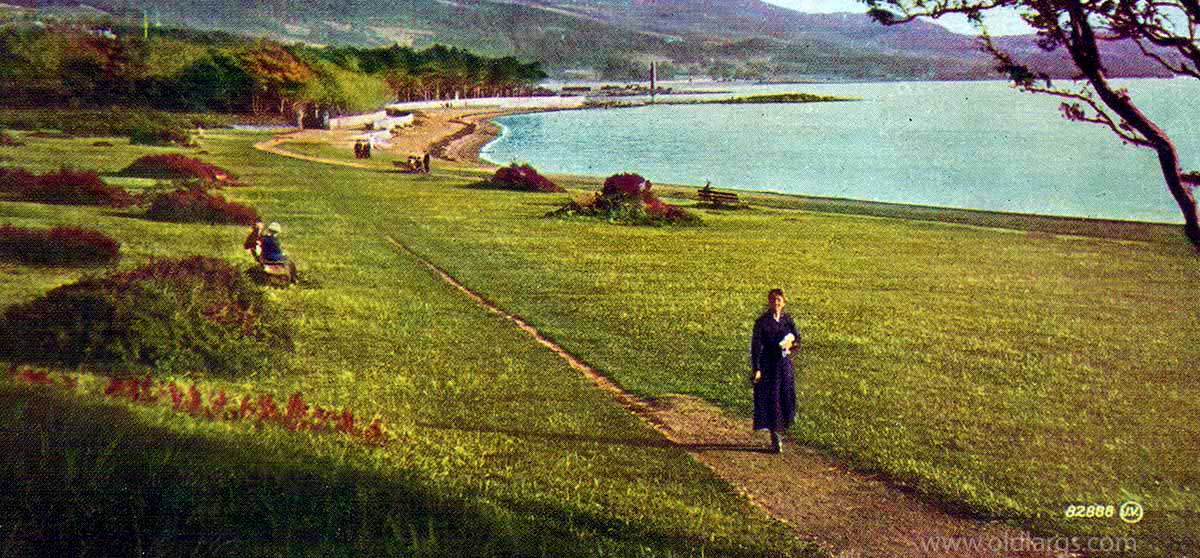
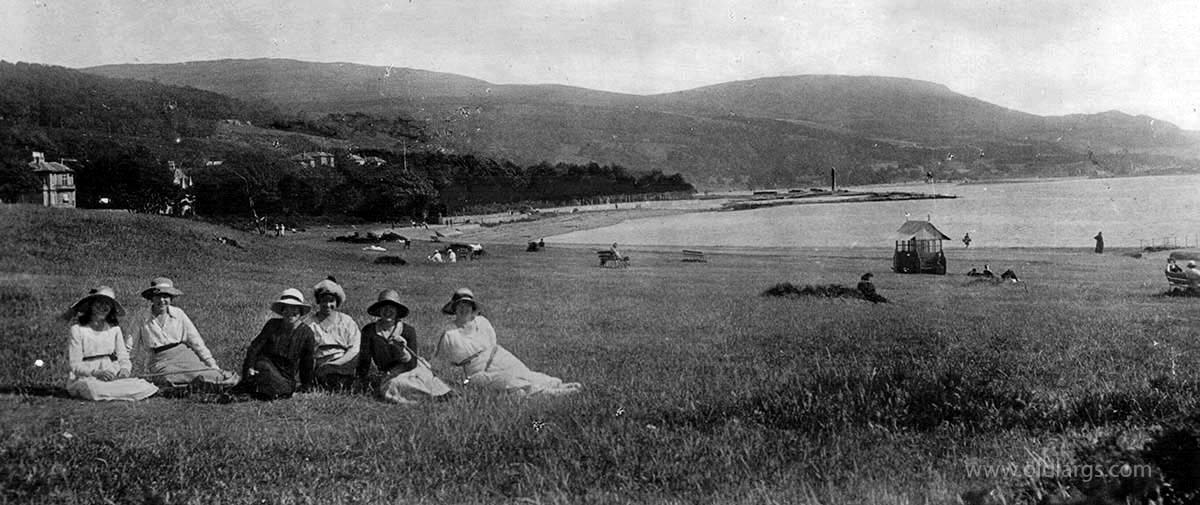
The standing stone in Broomfields is 10ft high and made of sandstone. Its often called Haco's Stone. For years it was said to mark the spot where Haco, the Norwegian chief was killed in the battle of Largs. We now know this not to be true. King Haakon sailed to Orkney after the Battle of Largs and died at Bishop's Palace in Kirkwall.
This is not the stones original position. In fact it has been moved many times. Early reports from 1822 had the stone located where Anderson Park is today. In 1813 Curlinghall was built by Dr John Cairne. It was one of the first large mansions to be built in Largs. The Curling Hall went onto be part of the Marine and Curling Hall Hotel which was eventually demolished in 1984 to make way for today’s Curlinghall Flats. In 1823 Dr Cairnie moved the stone and placed it in his garden within Curlinghall.Here the stone stood for 123 years before being moved again in 1956 due to building work at the expanding Marine and Curling Hall Hotel. When the hotel was demolished in 1984 it was re-located to its present position on the Broomfields. Dr Carnie attached a bronze plaque to the stone which stated that
"Here is buried Haco of Stein". Here is buried Haco of Stein, and everywhere around the earth covers his faithful Norwegian comrades. Hither they came seeking a kingdom here to her foes victorious Scotland gave graves, their just reward. 4 October 1263. At Largs 1 June A.D. 1823 John Cairnie erected me, and charged me to remind thee of that event; do thou remind others. "Here ended the rage of the Goth"